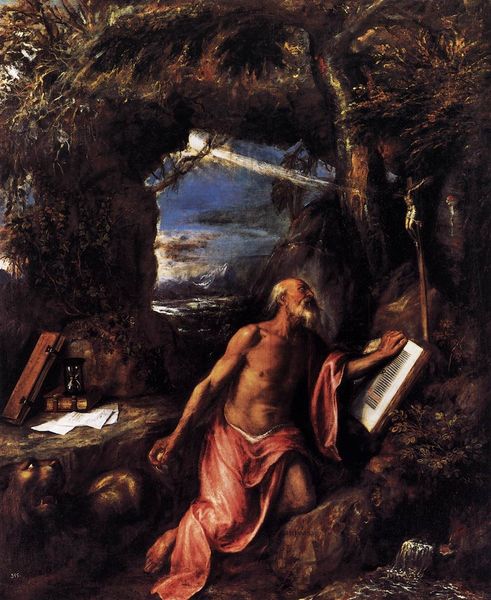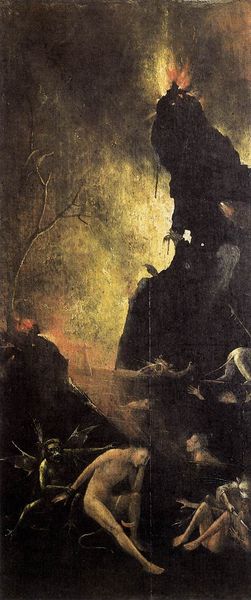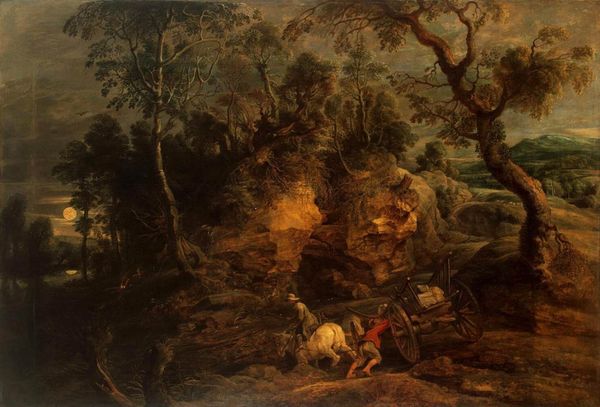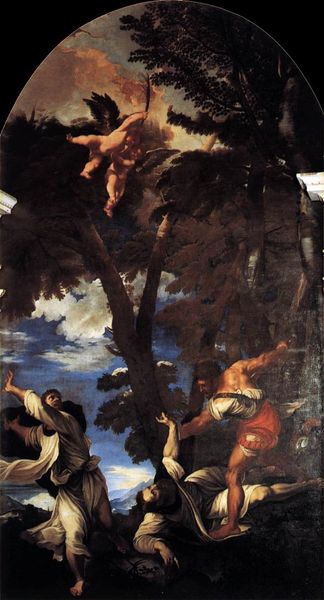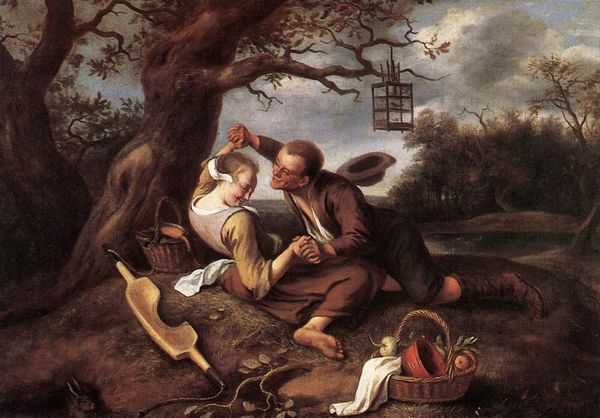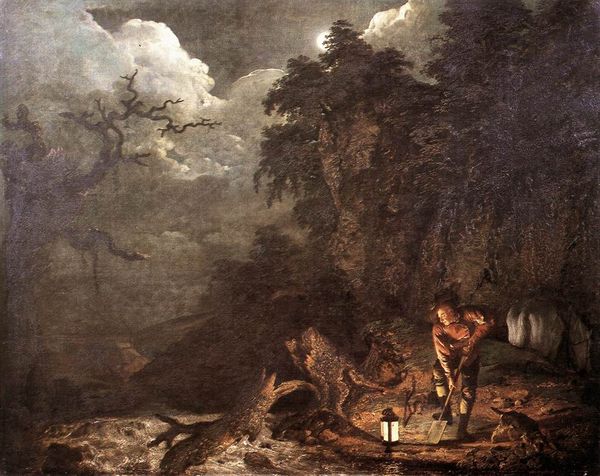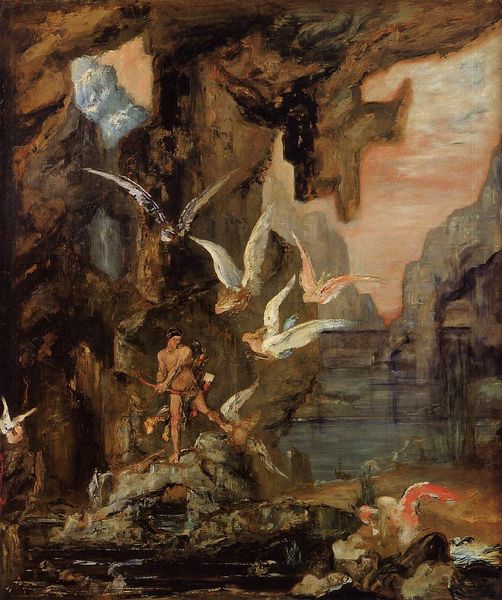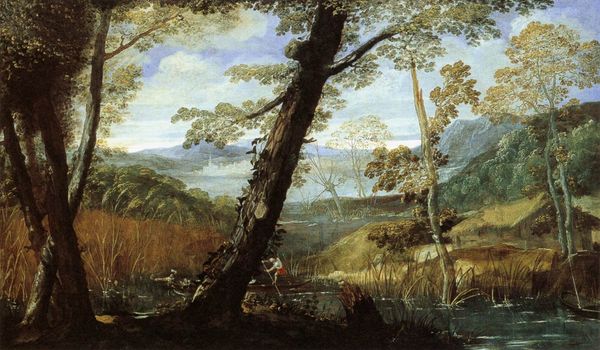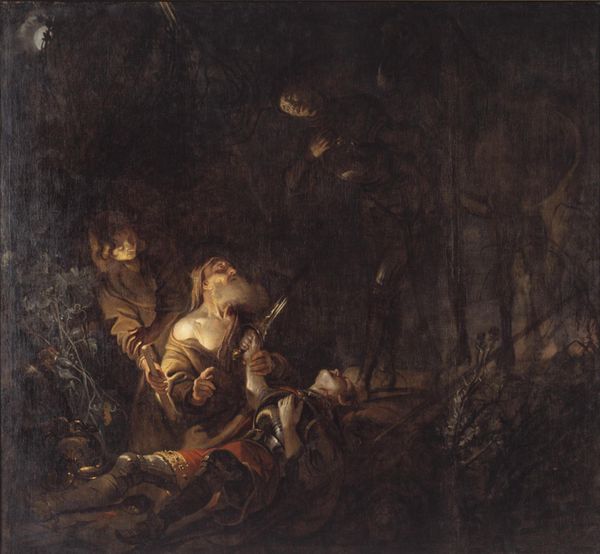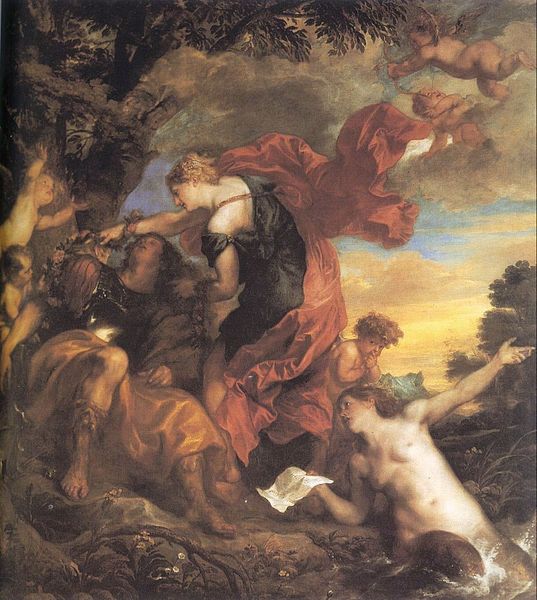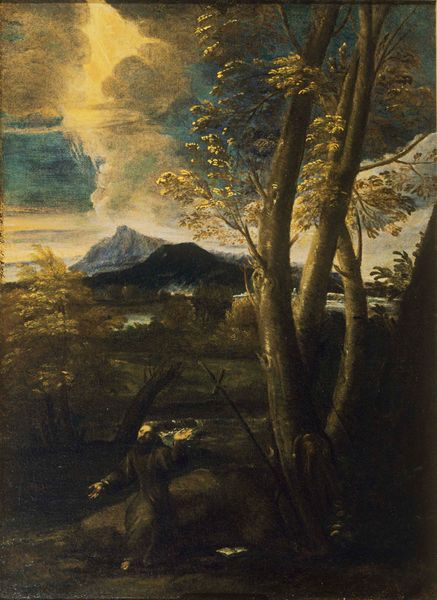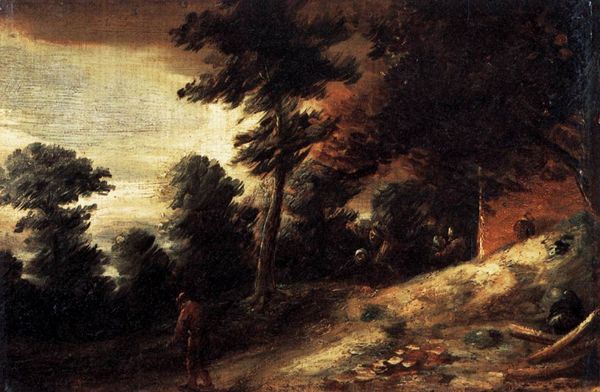
Democritus in Meditation 1650
0:00
0:00
salvatorrosa
National Gallery of Denmark (Statens Museum for Kunst), Copenhagen, Denmark
oil-paint
#
tree
#
allegory
#
baroque
#
fantasy art
#
oil-paint
#
landscape
#
figuration
#
momento-mori
#
history-painting
#
realism
Copyright: Public domain
Curator: This is Salvator Rosa's "Democritus in Meditation," painted in 1650. You can find it on display at the National Gallery of Denmark. Editor: It strikes me immediately as a work drenched in melancholy. The figure, surrounded by symbols of mortality, is so consumed by thought he's practically sinking into the earth itself. Curator: Rosa’s baroque sensibilities shine through, especially when considering his place in the artistic and intellectual currents of the time. The figure of Democritus was, in the 17th century, a point of contemplation about worldly and moral life in relation to the role of men within. Consider too, the networks through which pigments and canvases would move, facilitated by growing trade routes. The use of oil paints adds to the painting's depth and richness but was reliant on trade with countries to access. Editor: Absolutely. The bones, the crumbling structures—they're classic memento mori. It reflects on themes in Italian history painting. How does Rosa interpret this philosophical figure for a specific audience? I think it speaks to the political climate, perhaps a commentary on power. I would argue the landscape evokes a specific historical consciousness, embedding Democritus within a broader understanding of the era's social structure. The selection and presentation within galleries and museum spaces shape public interpretations. Curator: Interesting points, but I want to bring this back to Rosa’s technique. Observe his rendering of those bones, not just as symbols but as objects shaped by material decay, subjected to weather conditions. The interplay of shadow and light emphasizes texture. Moreover, there’s a social commentary embedded within the physical labor that produces art. These paints did not simply materialise. They came about through exploited resources. Editor: Indeed, so it is important to not divorce this depiction of material, natural elements from a critical interrogation of the socio-historical context, where access, viewership, display conventions, and broader institutional systems dictate what and how the image can and should be engaged. Rosa challenges traditional power dynamics, highlighting the role of material production as political messaging. Curator: A necessary addition to our understanding of Salvator Rosa. By focusing on how such an image emerged into the Italian artworld scene of the seventeenth century, it challenges viewers to question who gets canonized, what that artwork embodies and promotes, and whose history and power structures ultimately reign in this kind of visual and historical consumption. Editor: Precisely! Together, a new appreciation can happen. We highlight both what history frames but also that what materiality provides as another portal through which to investigate the social history within artwork.
Comments
No comments
Be the first to comment and join the conversation on the ultimate creative platform.
